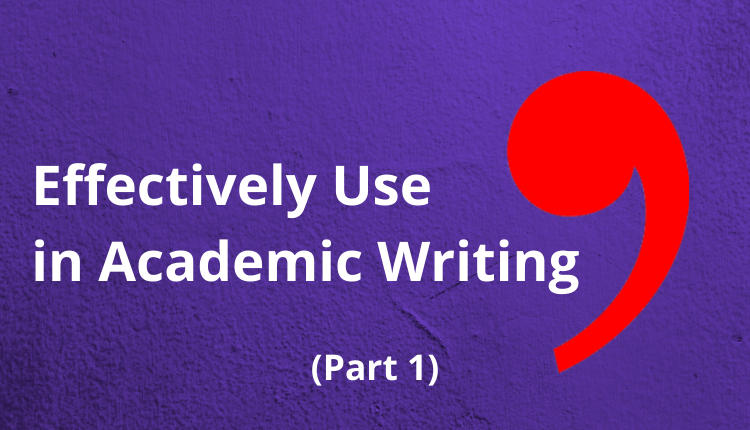Commas are one of the most misunderstood punctuation marks: the idea that commas can be added to indicate pauses must be dispensed with. In writing, comma usage is guided by sentence structure and readability to enable clear communication of ideas.
Certainly there are multiple online tools that can assist authors in using commas correctly. The one that we recommend is Trinka – the world’s first language enhancement tool that is custom-built for academic and technical writing. Its robust AI-powered functionalities corrects complex grammar errors, including accurate commas usage.
However, it is always good to know the specific rules that must be followed while using commas. We will explore them at length in this article.
Commas that Separate Elements in a List
One of the fundamental uses of a comma is to separate items in a list. In American English, a comma (also known as serial comma or Oxford comma) is inserted before the conjunction separating the last item in the list.
Points to remember:
- Commas are used to separate more than two elements in a list.
- Use a semicolon instead of a comma to segregate list items that have internal commas.
- The concluding conjunction may not always be “and”; “or” and “as well as” are also used for this purpose.
For instance,
The vouchers were distributed to the residents, schools, and colleges.
Introductory Comma
A comma is used after introductory words, phrases, and clauses that provide the background, stance, or transition for the main (independent) clause.
Introductory Words
Introductory words convey a sense of continuity from one sentence or point of view to the one following it.
Examples of introductory words: However, moreover, thus, therefore, further, etc.
Example: Therefore, the sample size had to be increased to include the observed anomalies.
Introductory Phrases and Clauses
Introductory phrases introduce an idea or thought that is elaborated in the main clause. Introductory phrases do not have a subject or a verb, unlike introductory clauses.
Introductory phrase: On one hand, grouping students by a response to positive facial expressions allows them to react at their own pace.
Introductory clause: Since zoologists have been trying to interpret how animals communicate, an experimental study will attempt to interpret sounds made by diverse species of mammals.
FANBOYS Comma
Use a comma to separate two independent clauses when they are joined by a coordinating conjunction. The acronym FANBOYS can help you remember these conjunctions.
F – for
A – and
N – nor
B – but (not because, which is a subordinating conjunction)
O – or
Y – yet
S – so
Clauses that can convey the entire meaning on their own are called independent clauses. They are joined by suitable coordinating conjunctions to communicate a sense of continuity. Preferably, two independent clauses can be separated by a period and represented as separate sentences. However, transition words and phrases, as well as coordinating conjunctions, are used to indicate the logical flow of a sentence or an argument.
Examples,
-
In this study, sensitivity to feedback in classrooms was not considered for the outcome, but it is relevant and should have been considered.
-
The supply chain of the organizations observed had been extensively affected after the Fukushima disaster, yet they resumed operation soon after.
Each of the seven coordinating conjunctions plays a different role in a sentence and must be appropriately used to link the independent clauses.

Comma Splice
A comma splice occurs when two independent clauses are separated by a comma instead of being joined by a suitable conjunction. Such commas should be corrected.
For instance: Residents complained about the substantial increase in noise pollution when the development project began, nobody has taken this into consideration.
Such issues can be resolved by,
- Using a semicolon to separate the two independent clauses: Residents complained about the substantial increase in noise pollution when the development project began; nobody has taken this into consideration.
- Using a period to separate the two independent clauses: Residents complained about the substantial increase in noise pollution when the development project began. Nobody has taken this into consideration.
One of the most prominent uses of a comma is with respect to parenthetical elements. Parenthetical elements are considered additional information; that is, even if such information is removed from a sentence, the sentence would still convey the intended message completely. Parenthetical elements, however, are often best judged contextually, and this will be discussed in detail in How to Use Commas in Academic Writing (Part 2).
So much to learn about commas, isn’t it? If you need help in following all the above rules of comma usage or are looking for an AI-driven writing tool to enhance your writing, then check out Trinka, Its several exclusive features can help you get your manuscript ready for the global audience.

